In 2007, which became one of the New Wonders of the World, it towers majestically over Rio de Janeiro. The arm span of the 38-meter statue, weighing over a thousand tons, is 30 meters. The monument, erected on top of a mountain called Corcovado, is one of the most famous statues in the world. Every year, millions of tourists rush to its foot to see with their own eyes the stunning panorama of Rio, the picturesque bay near Sugar Loaf Mountain, the endless Copacabana Beach and huge stadium Maracana.
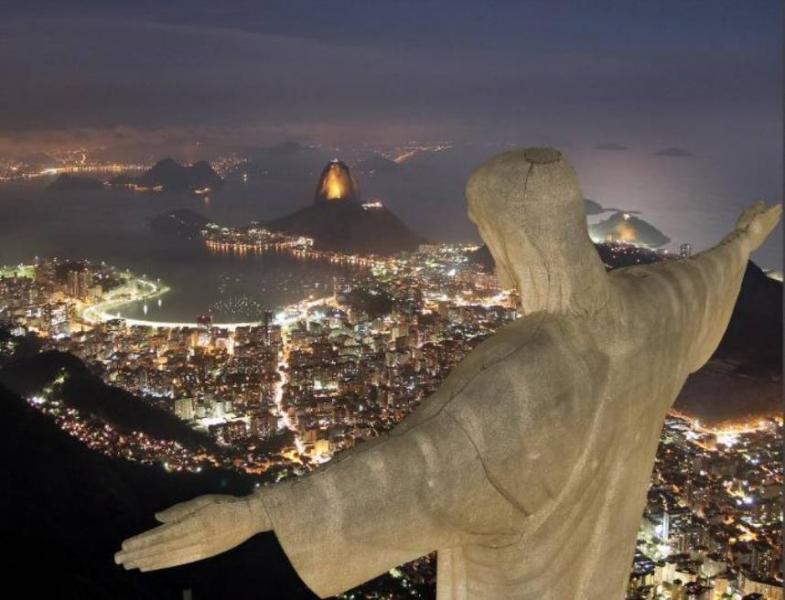
Getting to the top is possible by electrified railway on which he walks miniature train. The road was built long before the appearance of the Statue of Christ (back in late XIX century) and played a significant role in the creation of the monument - building materials were delivered with its help. The statue can also be reached by car on the highway that passes through the Tijuca National Reserve.
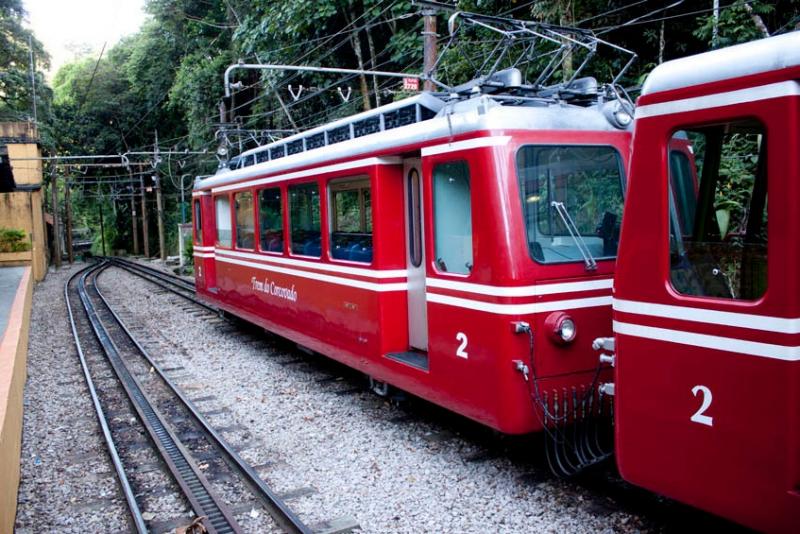
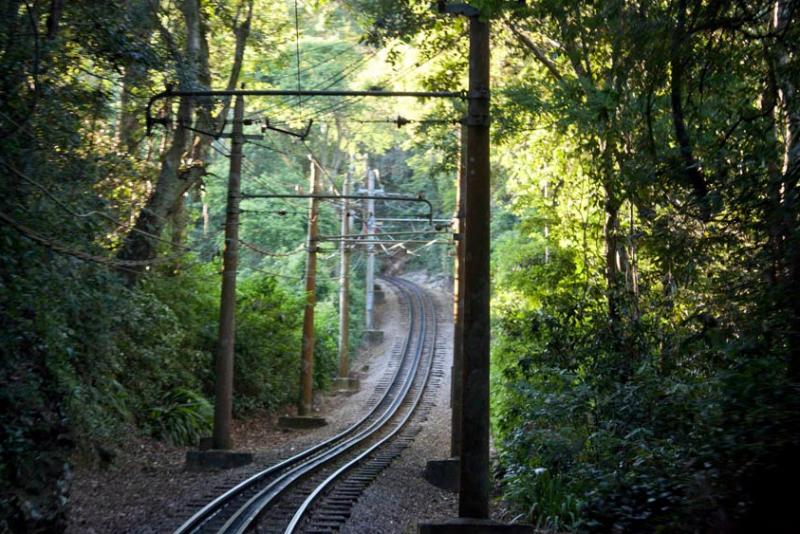
In 1859, the holy father Pedro M. Boss was so struck by the beauty Corcovado, who proposed to create a religious monument on its top. The idea was approved, but construction was delayed for a long time. It was only in 1921 that it was decided that the statue of Christ, grandiose in size, would become a monument, and the start of fundraising was immediately announced.


Initially, the monument was presented by the Brazilian artist C. Oswald as a globe on which Christ stood, but later the project was changed to a more classical one. Due to the lack of the possibility of building monuments of such magnitude in Brazil, France took up this. All components were first transported by sea, and then delivered upstairs by the aforementioned railway. The material for the creation of the statue was reinforced concrete and the so-called "soap" stone. As a result, the opening of the monument took place in 1931. Over time, the statue of Christ the Redeemer underwent reconstruction several times; in 2003, escalators were installed on the rise. In the basement of the statue is chapel where prayers, weddings, christenings and other events are held.
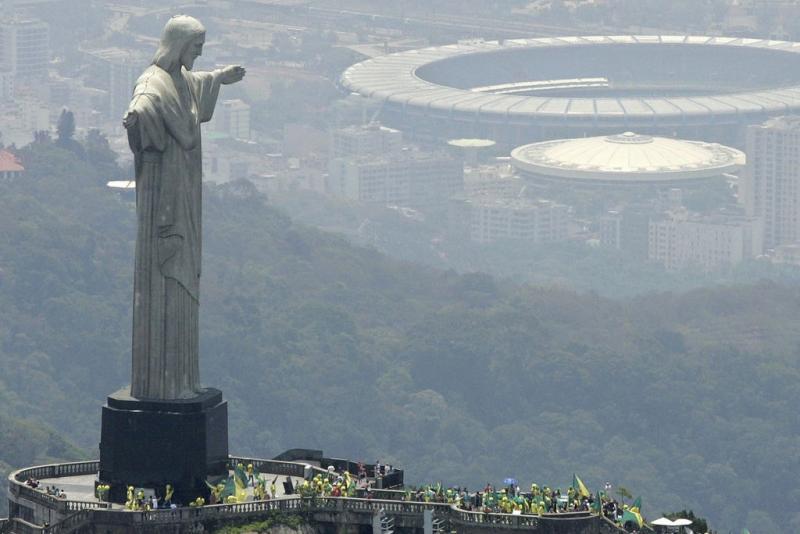
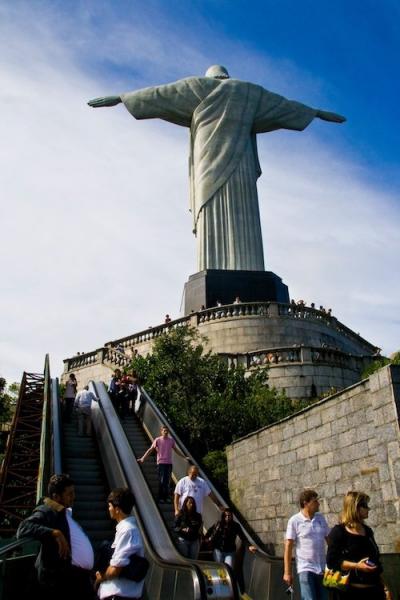
Trains with red trailers, which run every half hour, quickly deliver tourists almost to the monument itself, the journey takes about 20 minutes. The rest of the path, leading to the monument and comprising 223 steps, is quite winding, which is why the locals called it the "snail". In 2008, lightning struck the monument, damaging it slightly. In 2010, during the restoration of the statue, the first and so far the only act of vandalism took place, when someone, being on scaffolding, made inscriptions directly on the face of Christ.

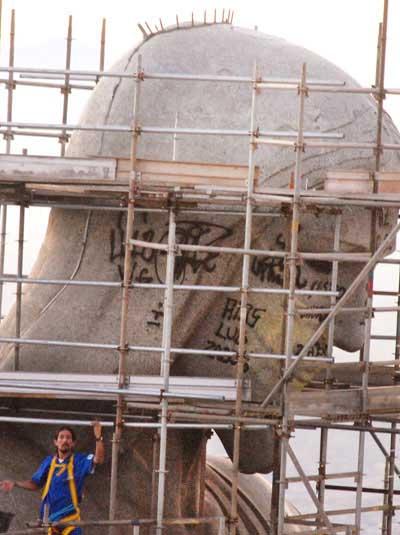
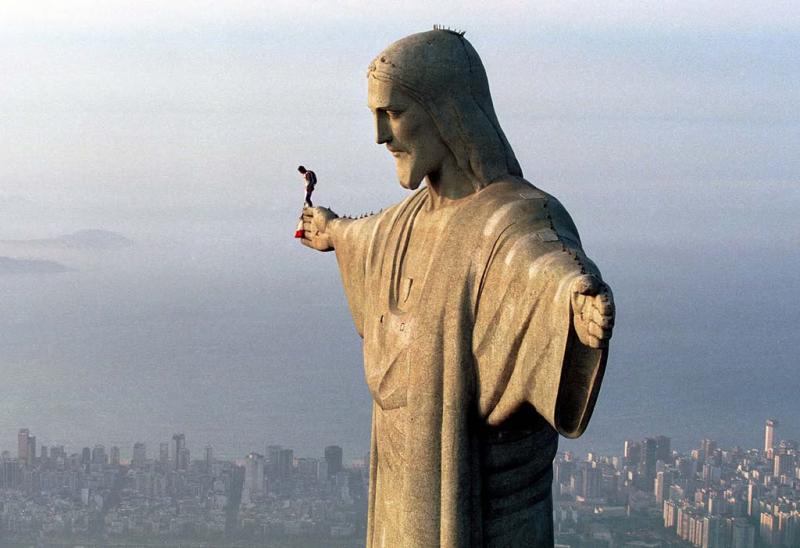
The statue of Christ the Redeemer is the hallmark of sunny Rio. The largest flow of pilgrims and tourists is observed here before Easter and during the incendiary carnival. Due to its location, the statue of Christ is perfectly visible from a fairly long distance. And it looks truly divine in certain lighting. However, the most impressive view of the city and its surroundings, which opens from the observation deck, built at the foot of the statue.
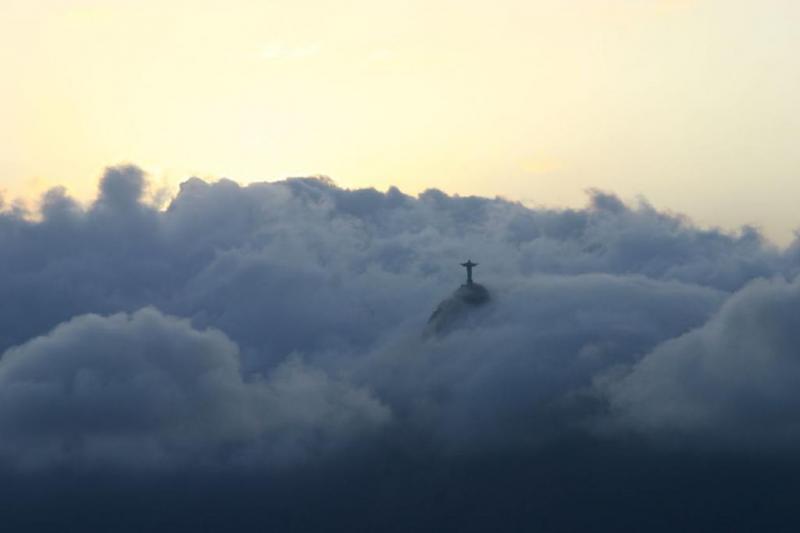

Known all over the world statue of jesus christ in rio de janeiro in brazil located at the very top of Corcovado mountain. She is a symbol of the city and the whole as a whole. The height of Jesus reaches 46 meters (including a pedestal 8 meters high), the span of Christ's arms is 28 meters, the weight is 1143 tons, and the materials for construction and all components of the future monument were made in France.
The Brazilian attraction is considered one of the Seven New Wonders of the World.
The grand opening of the statue of Jesus Christ took place in 1931, it took 9 years to build and more than $ 250,000 was spent (by the standards of those times). In 1922, just in time for the centenary of Brazil's state independence, the magazine O Cruzeiro announced a competition for the best project for a statue - a symbol of the nation. Funds for the construction were collected by the then popular weekly O Cruzeiro from subscriptions, as well as with the help of the church, which organized charitable gatherings throughout the country. This period was later called "Monument Week". As a result, the winner of the competition was the engineer Hector da Silva, and the author of the initial sketch of Jesus the Redeemer was the artist Carlos Oswald, who proposed to erect a figure of Jesus with outstretched arms, embracing the city and the whole world. This blessing gesture symbolizes compassion and retains the meaning of the phrase "All that exists is in the hands of the Lord."
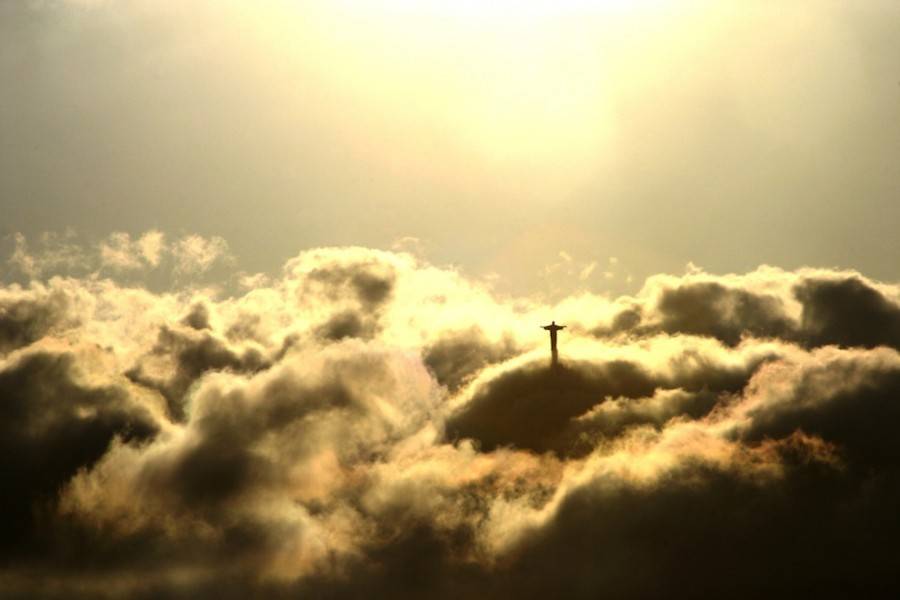 It is also worth noting that initially the pedestal for Jesus had to be made in the form the globe, but later the project was changed to the version that we see today. By the way, a small chapel has been located inside this pedestal for many years.
It is also worth noting that initially the pedestal for Jesus had to be made in the form the globe, but later the project was changed to the version that we see today. By the way, a small chapel has been located inside this pedestal for many years.
 Statue of Jesus Christ in Brazil is one of the largest and most majestic art deco statues in the world. Every year, more than two million believers and ordinary tourists from all over the world make a pilgrimage, overcoming 220 steps, called "Karakol", on the way to the foot of the statue, where an incredible landscape of the city and the bay opens from the observation platforms. There are several ways to climb the mountain: by bus, by taxi or by your own car, by a mini-train that takes tourists to the top by an electrified railway. This railroad was built long before the appearance of the statue and subsequently was extremely useful for engineers and builders. She greatly simplified the process of lifting building materials and parts of the future statue, which arrived from France, to the top of the mountain. The path to the top is laid along the Tijuca nature reserve, which adorns the path to the top from its very foot.
Statue of Jesus Christ in Brazil is one of the largest and most majestic art deco statues in the world. Every year, more than two million believers and ordinary tourists from all over the world make a pilgrimage, overcoming 220 steps, called "Karakol", on the way to the foot of the statue, where an incredible landscape of the city and the bay opens from the observation platforms. There are several ways to climb the mountain: by bus, by taxi or by your own car, by a mini-train that takes tourists to the top by an electrified railway. This railroad was built long before the appearance of the statue and subsequently was extremely useful for engineers and builders. She greatly simplified the process of lifting building materials and parts of the future statue, which arrived from France, to the top of the mountain. The path to the top is laid along the Tijuca nature reserve, which adorns the path to the top from its very foot.
In 2000, the authorities of Rio de Janeiro carried out a small restoration of the statue of Jesus Christ, during which the fluorescent lighting was finalized, creating a stunning view of the statue at night.
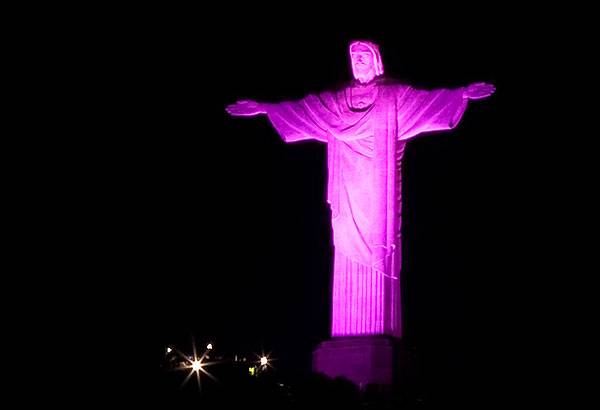 Since the statue of Jesus Christ in Rio de Janeiro is the most high point cities, then every year during a thunderstorm several lightning strikes it. So, for example, in January 2014, lightning struck the statue and damaged the thumb on the right hand of Jesus, in December of the same year, the index finger on the same hand and the head were already damaged. Because of this, the authorities decided to increase the number of lightning rods. It was this role that the crown on the head of the statue played, in addition to it, lightning rods on the hands were added. During the repair, the statue was not closed, and twenty climbers carried out repairs right in front of the tourists. In 2010, the statue was vandalized, unknown people painted it with a black spray can, writing blasphemous inscriptions, such as "The cat from the house - the mice dance", but they were all promptly removed.
Since the statue of Jesus Christ in Rio de Janeiro is the most high point cities, then every year during a thunderstorm several lightning strikes it. So, for example, in January 2014, lightning struck the statue and damaged the thumb on the right hand of Jesus, in December of the same year, the index finger on the same hand and the head were already damaged. Because of this, the authorities decided to increase the number of lightning rods. It was this role that the crown on the head of the statue played, in addition to it, lightning rods on the hands were added. During the repair, the statue was not closed, and twenty climbers carried out repairs right in front of the tourists. In 2010, the statue was vandalized, unknown people painted it with a black spray can, writing blasphemous inscriptions, such as "The cat from the house - the mice dance", but they were all promptly removed.
To date statue of Jesus Christ (or Christ the Redeemer) in Rio de Janeiro is an calling card throughout Brazil.
It is a matter of honor for every traveler, having been in Brazil, to come to Rio de Janeiro and visit the foot of the majestic statues of Christ the Savior. The magnificent landscape that opens at the foot of the statue, the feeling of some kind of inner power and delight will not leave anyone indifferent. It is best to leave a visit to the statue "for a snack". Thus, you will be able to see the familiar landscape and guess the Formula 1 tracks, the Maracana Stadium, the Sugarloaf and other sights that only the lazy do not talk about and write about. Almost forty-meter hulk (to be precise, thirty-eight) is visible from almost any corner of Rio, just like the whole city is visible from the statue. But do not even dream of taking a picture of everything together - the location of the statue does not make it possible to do this. An option is to fly by plane, but more on that later.
History of Jesus statue in Brazil
Jesus in Rio de Janeiro rises since 1931. But his story begins much earlier. The pedestal of the future statue was the so-called "mountain of temptation", which is mentioned in the Bible. But folk associative chains led to the renaming of the mountain in Corcovado, which in Spanish means "hunchback". The fact is that the mountain really resembles a hump. The mystery and beauty of Mount Corcovado is striking and mesmerizing. She did not leave indifferent the Catholic priest Pedro Maria Bossa. He could not resist the temptation to erect a statue of Jesus on the mountain. But for a large statue - big expenses, which the clergyman did not have. He offered to sponsor the action to the then Princess Isabella. And so that she would certainly agree, he promised to dedicate a statue to her and immortalize the virtuous lady. But the question of eternity turned out to be less attractive for the princess than the question of spending money, and she wished to postpone this matter until better times. But the plans were not destined to come true. Since the monarchy fell, and the church was separated from the state by law.
While the statue began to be forgotten, the construction of the railway from Rio to the top of the Hunchback began in full swing. Thus, when the idea of creating a statue was returned to the anniversary of the independence of Brazil in 1922, it was already possible to supply materials for construction without any special difficulties. Interesting is the fact that the statue was built with the money of the townspeople. Fundraising was taking place in churches when "monument week" was announced. Part of the money was donated by the church itself.
Construction began in April 1922, when the foundation stone of the pedestal was laid.

But before that, it was necessary to decide what it would look like monument in Rio de Janeiro. The city administration immediately announced a competition for the best project, but, amid fierce competition, Heitor de Silva Costa became the winner. In the project, he embodied the idea that everything in existence is in the hands of the Lord. The outstretched arms of the statue schematically depict a cross, and it was originally supposed to stand on a ball that would symbolize our planet.
The final layout was completed in 1927 - and finally the construction of the statue began. The artists, architects and engineers who developed the models lived near the statue throughout the construction and slept in a nearby tent.
The statue was collected by the whole world. Well, almost everyone. The head and arms were assembled in France for technical reasons, and the French sculptor Paul Landowsky took part in modeling these parts of the statue. The material for making the sculpture was brought from Sweden.
The construction of the statue cost by today's standards quite cheap - a quarter of a million dollars. But at the time it was a huge amount.
How to get to the Monument of Jesus Christ in Rio de Janeiro?
You can get to the city in any way: from the plane to the ship through the train and car. In the city itself, catch a taxi (by the way, taxi services are not cheap in Rio), wait for the bus. There are two trains running from the city center to Corcovado Mountain. The ride is short, only twenty or twenty five minutes.
The narrow railroad, which originally delivered the building materials for the statue, now carries a crazy flow of tourists. Every hour, an average of three and a half hundred tourists are delivered to the statue in Rio de Janeiro.

If public transport- this is not the view that you are used to, you can take a taxi or rent a car to the statue of Jesus Christ in Rio de Janeiro. Such pleasure will cost more, but it also has its advantages. Apart from increased comfort, you get a tour of national reserve and the largest forest area in the world, which is located in the halls of the city. You still have to get to the top without a car - on an escalator, which was installed here only in 2003. You can look at the statue from a bird's eye view by renting a private jet or helicopter, but the rent is simply fabulous. Although there is nothing to argue about the ratio of price and saturation of impressions - the view pays for the costs.
Statue of Christ the Redeemer in Rio de Janeiro today
The statue was consecrated twice by Pope John Paul II. The Brazilians themselves believe in the miraculous power of the statue and that it protects the city from troubles and adversities. Moreover, severe thunderstorms do not affect the statue, while the area around it can be severely damaged and more than one tree stands cut by lightning. Scientists are not inclined to believe in a miracle, and explain this phenomenon by the fact that the soapstone from which the statue was erected turned out to be a powerful dielectric.
However, time is taking its toll and Christ statue in Rio de Janeiro needs repair again, note the third time in more than 75 years.
Statue in Rio de Janeiro, photo which is decorated with all sorts of guidebooks, and any thing that is more or less connected with Brazil has twins all over the world. They are naturally smaller, but some of them are striking. So, for example, the monument to Jesus, which stands in Indonesia (the Muslim faith prevails), surprises with impudence.
Brazil Construction of the statue of Jesus Christ, video:
Bring your creative ideas to life! You can choose and buy fabrics for creativity by visiting the catalog of the martapillow.ru online store. Here are natural high-quality fabrics for patchwork, sewing toys, etc. If you have not found anything suitable, but you know what material you need, we can offer custom-made fabrics. All goods can be ordered with delivery to any region of Russia.
The giant statue of Christ the Redeemer, crowning the 710-meter-high Corcovado mountain, has been rightfully considered a symbol of Rio de Janeiro and Brazil as a whole for 80 years. The statue of Christ with outstretched arms rises above the city of 10 million, as if blessing and embracing it.
The statue reaches 38 meters in height and weighs 1145 tons. At the foot of the monument there is an observation deck, which offers amazing views of the sandy beaches, the huge bowl of the Maracana Stadium, Guanabara Bay and Sugar Loaf Peak, similar in outline to a piece of sugar.
How to get to the statue of Christ the Redeemer?
Go down to observation deck you can take a lift or tram along the first electrified railway in Brazil, which is 50 years older than the statue. There is also a highway leading to the monument, which runs through national park Tijuca, on the slopes of the mountains, overgrown with jungle. Leaving the railway station or parking lot, tourists go up to the statue of Christ the Redeemer on an escalator, and the most hardy - on foot, along a steep staircase of 223 steps, popularly nicknamed "Snail".
The idea of building a monument arose at the beginning of the 20th century. The monument on Mount Corcovado was planned to be erected by 1922, and its opening to coincide with the 100th anniversary of Brazil's independence from Portugal. However, the construction of the statue was delayed and ended 9 years later, in 1931. The final project of the monument was developed by the Brazilian sculptor Hector de Silva Costa. The statue of Christ the Redeemer with outstretched hands in a blessing gesture was supposed to express compassion and at the same time joyful pride, and from a distance the figure would look like a huge cross. The townspeople enthusiastically accepted the project of Hector de Silva Costa also because it crossed out the previous plan, according to which the city authorities proposed to erect a monument to Christopher Columbus on Mount Sugar Loaf. The Brazilians did not like Columbus: having discovered America, he paved the way for the Portuguese conquerors who founded overseas colonies in Brazil.
Look at the tallest statues erected in honor of Jesus Christ in different parts of the world.
most famous statue Jesus on the planet is a statue of Jesus Christ in Rio de Janeiro in Brazil. But the one who thinks that she is the largest in the world is deeply mistaken. The statue on Mount Corcovado, overlooking Rio, is only the fourth largest statue of Christ on Earth.
1. Cristo Rey - Mexico, 20.5 meters
This statue of Christ is located in the geographical center of Mexico - on the 2700-meter mountain Cerro del Cubilete.
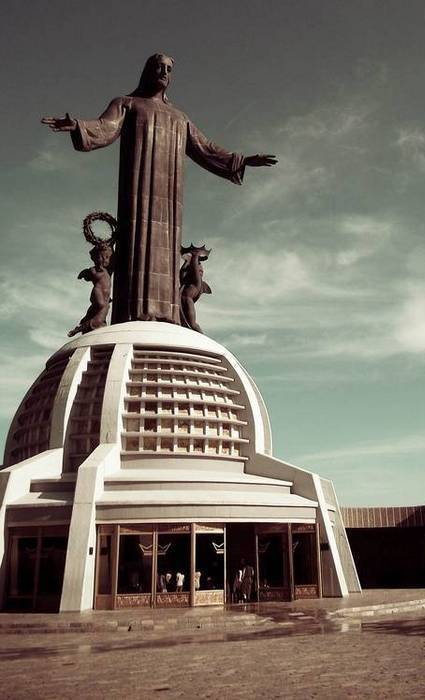
The statue was completed in 1944 and its style is attributed to the Art Deco movement. Now Cristo Rei is considered one of the most significant religious monuments in the country.
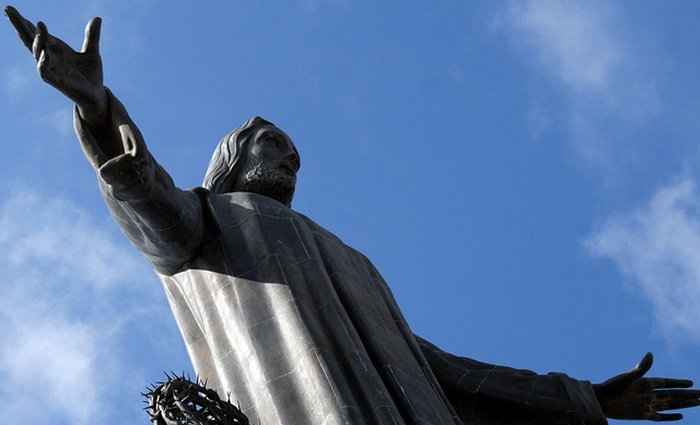
2. Statue of Christ the Savior - Maratea (Italy), 21.23 meters
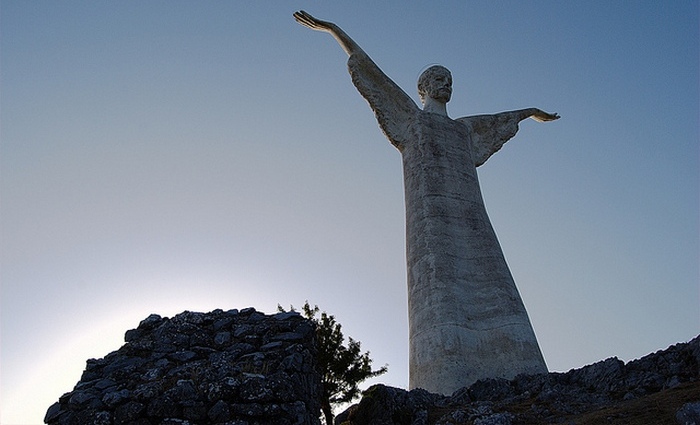
The statue, also known as the Cristo Redentore di Maratea, was made from white and blue-gray marble quarried near the city of Carrara.
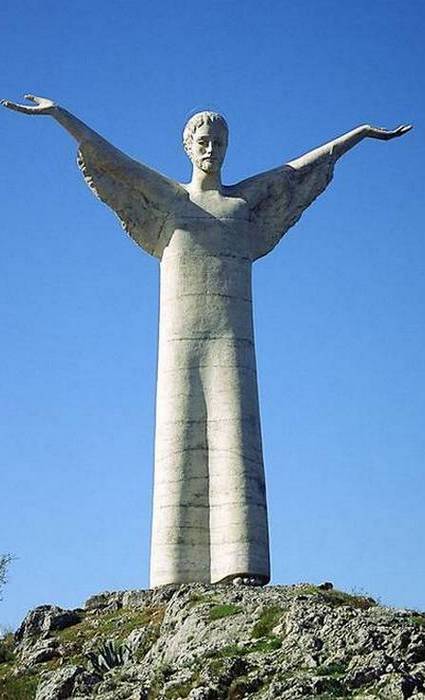
Unlike some of the other statues built with donations from the public, Cristo Redentore was erected at the expense of one person - Stefano Rivetti, an entrepreneur from Piedmont.

3. Cristo de las Noas (Mexico), 21.8 meters

The statue was named after the hill on which it was erected - Cerro de las Noas. The construction of the 580-ton statue began in 1973 and was completed only seventeen years later.
![]()
At its foot is a restaurant, which is considered one of the most popular among the residents of the city of Torreon.
4. Christ of the Pacific (Peru), 22 meters
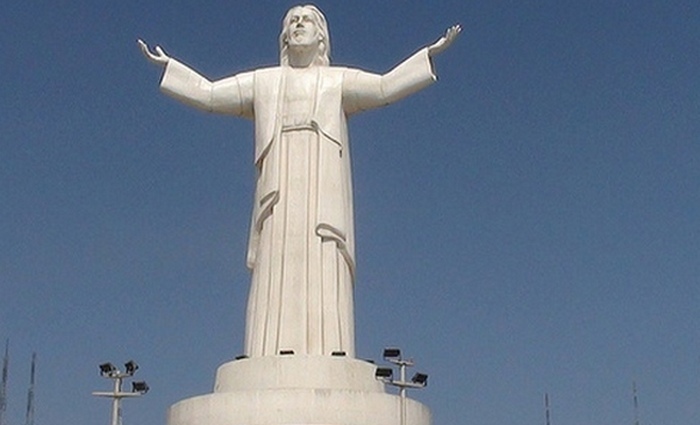
The Cristo del Pacifico was President Alberto Fujimori's farewell gift to the people of Peru. When he lost the 2011 presidential election, he decided to give the Peruvians one last gift by building a replica of the Christ the Redeemer statue in Rio in Lima.

However, he was criticized because the Peruvians felt that the people should have their own unique statue, and not a copy of someone else's.

5. Christ of the Sacred Heart (Mexico), 23 meters

10 kilometers from the Mexican city of Rosarito is a giant statue of Cristo del Sagrado Corazon, made of steel and fiberglass.
![]()
Sculptor Gregorio Tijuana, claims to be the creator of the most unique statue of Christ, not because of its height, but because it is made in color (usually all other statues are white or gray).
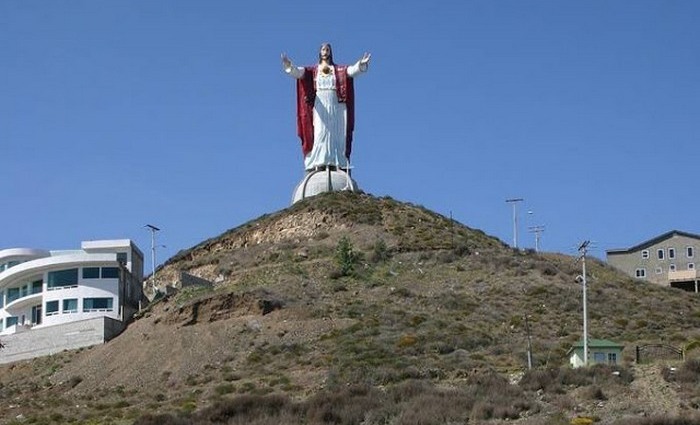
The statue of Christ of the Sacred Heart is the pride of the Mexicans.
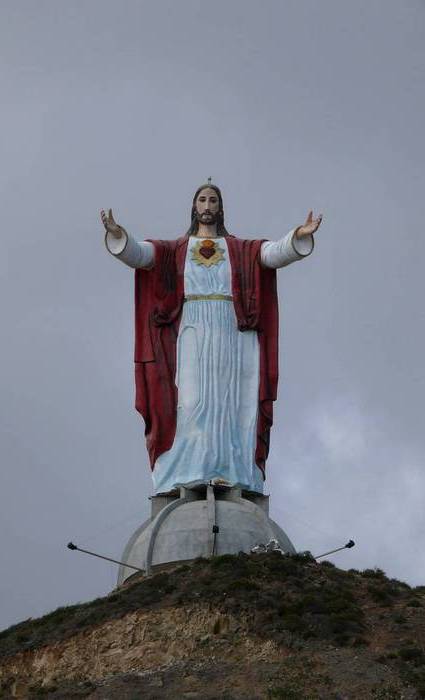
6. Cristo Rey de Los Alamos (Mexico), 23 meters
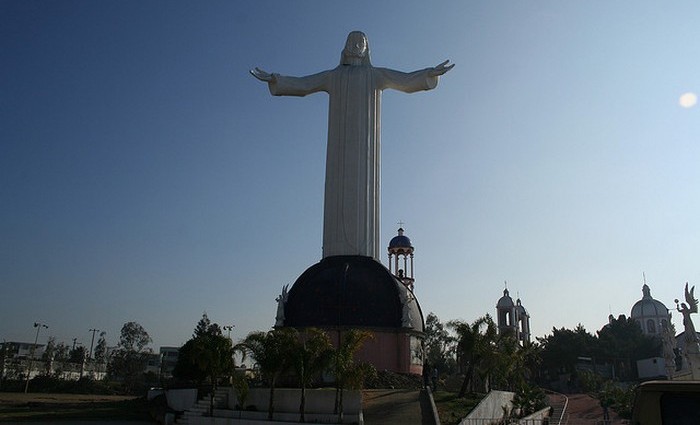
The resin and fiberglass statue is located in the border town of Tijuana.
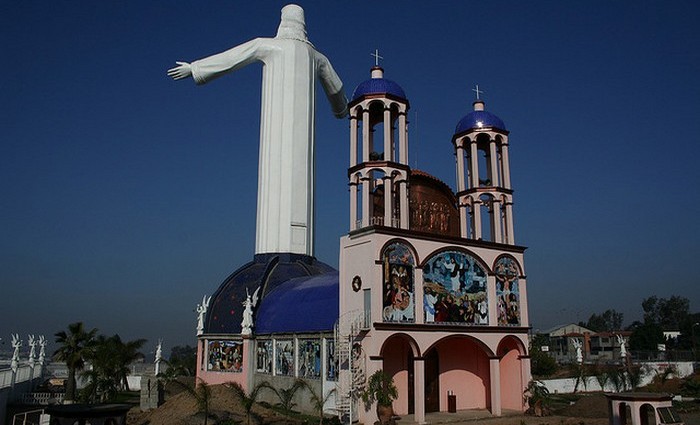
Moreover, they built an almost 24-meter statue on the dome of the church of San Martin de Porres Tijuana.
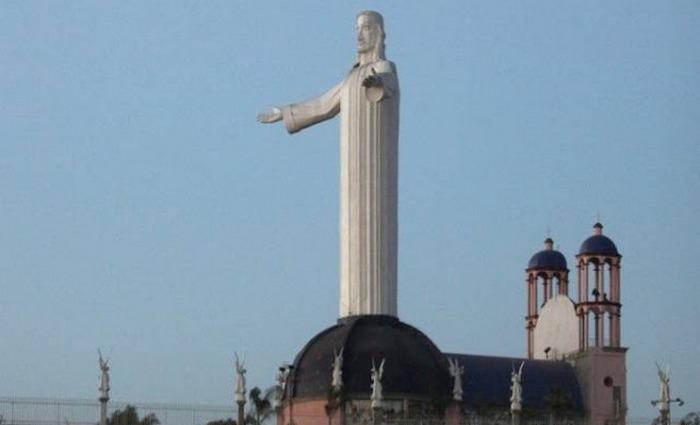
7. El Cristo Roto (Mexico), 25 meters
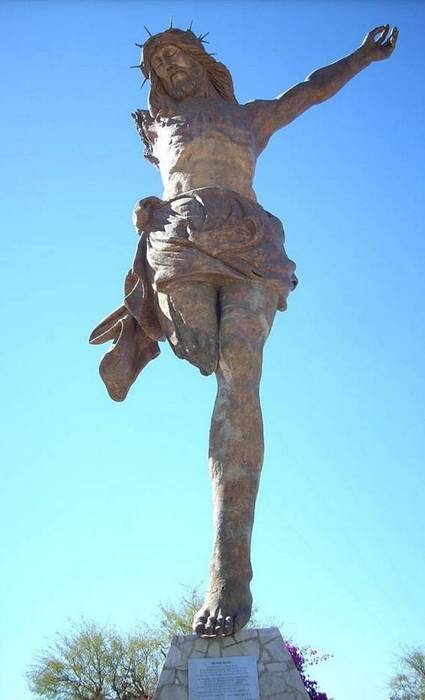
An unusual one-legged and one-armed giant statue of Christ was built in the Mexican town of San José de Gracia.

El Cristo Roto (The Broken Christ) attracts thousands of pilgrims every year.

8. Christ Rua de Houches (France), 25 meters
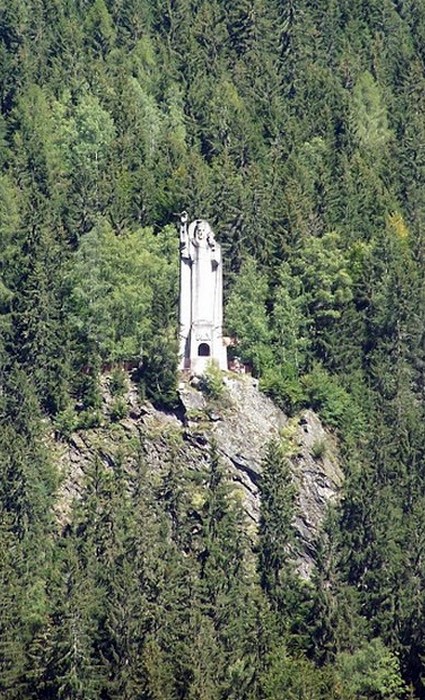
The monumental statue of Christ the King is located in Les Houches, Haute-Savoie in France.

Abbé Claude Delassie, pastor of Les Houches, who initiated the construction of this monument, wanted to erect a statue that would embody the idea of the universal kingdom of Christ on Earth. The first stone was laid in August 1933, and the statue was unveiled just a year later.

9. Christ of Mercy (Nicaragua), 26 meters
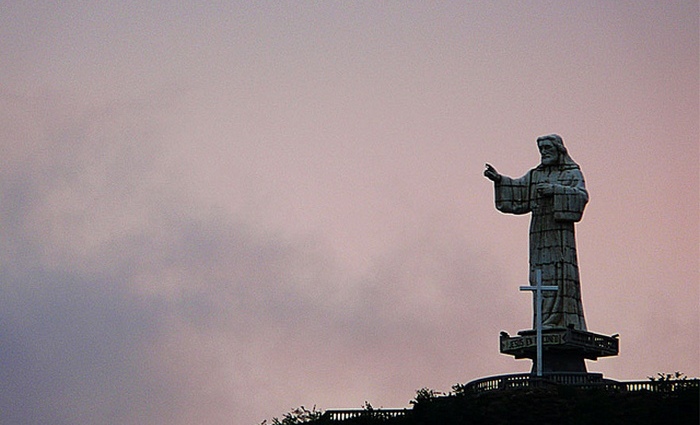
El Cristo de la Misericordia - huge statue in the city of San Juan del Sur, which is the most big statue Christ in Central America.
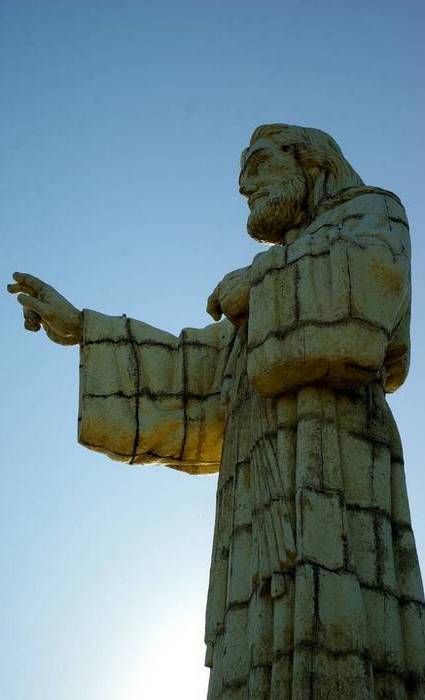
This statue was the dream of a local businessman, Ervin Gonzalez, who made his fortune in tourism. In the end, he built it on his personal land plot.
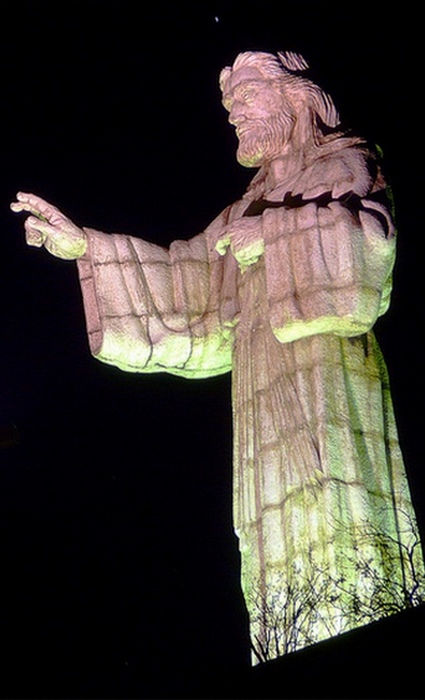
10. Christ the King (Colombia), 26 meters

On top of Los Cristales - one of the two mountains that tower over the Colombian city of Cali - in 1953, a 464-ton statue of Cristo Rey was erected. It was supposed to symbolize respect for peace and security. local residents.

Only the most energetic tourists get to the statue, because it is located at an altitude of 1440 m above sea level.
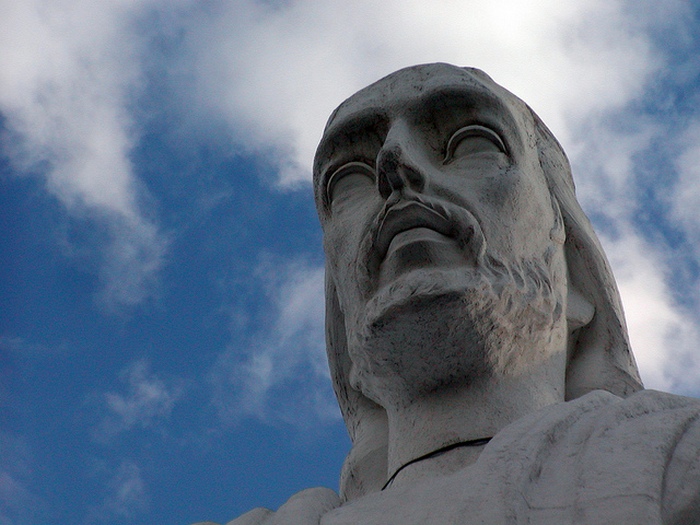
11. Cristo Rei Dili (East Timor), 27m
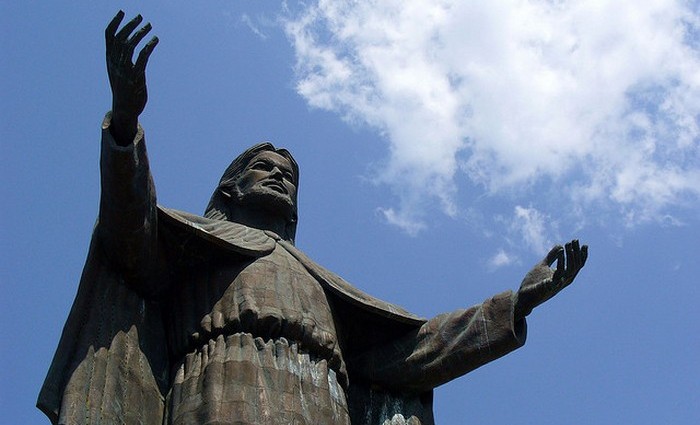
The statue of Christ the King was a gift from the Government of Indonesia to the people of East Timor. At the time of construction (1996), East Timor was a province of Indonesia before gaining independence in 2002. Since then, the statue of Cristo Rei has become one of the main tourist attractions of the new independent state.




